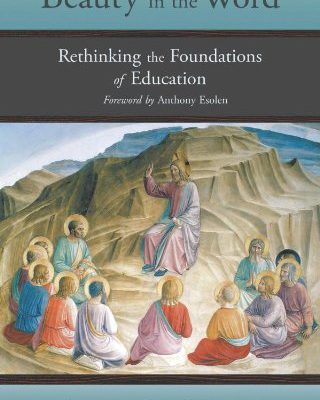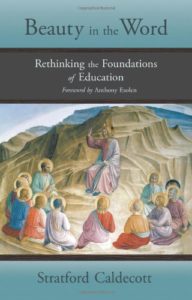Seeing beauty – education’s goal.
Humanities’ instruction depends on the origin of humanity.
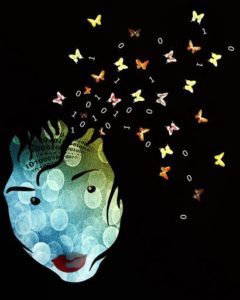 Caldecott’s thesis can be easily summarized: To be educated means we must constantly return to origins in order to pursue any ends. For the Christian educator, education must begin with, end on, and be motivated through Heaven. Against the fragmentation of god-less instruction, believers in Jesus – “who holds all things together” (Colossians 1.17) – commit to a coherent understanding of the unity of knowledge.
Caldecott’s thesis can be easily summarized: To be educated means we must constantly return to origins in order to pursue any ends. For the Christian educator, education must begin with, end on, and be motivated through Heaven. Against the fragmentation of god-less instruction, believers in Jesus – “who holds all things together” (Colossians 1.17) – commit to a coherent understanding of the unity of knowledge.
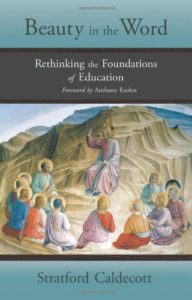 Stratford Caldecott, author of Beauty in The Word, brings the reader back to basics, to order, the classic-classical educational vision: one must know disciplinary information (grammar), learn how to reason about the subject (logic), and clearly, with familiarity, articulate the overview of ideas (rhetoric). But Caldecott’s Catholic tradition is not simply a pedantic educational framework, chisel against stone; it is the adoration of beauty.
Stratford Caldecott, author of Beauty in The Word, brings the reader back to basics, to order, the classic-classical educational vision: one must know disciplinary information (grammar), learn how to reason about the subject (logic), and clearly, with familiarity, articulate the overview of ideas (rhetoric). But Caldecott’s Catholic tradition is not simply a pedantic educational framework, chisel against stone; it is the adoration of beauty.
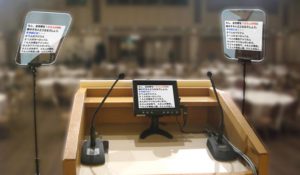 Educational foundations are born of origins and ends, a commitment to God’s love which gave birth to His world and the educator’s love which births commitment to beauty, goodness, and truth. The order of words is imperative. Caldecott yearns for lecterns to be turned into easels of artwork.
Educational foundations are born of origins and ends, a commitment to God’s love which gave birth to His world and the educator’s love which births commitment to beauty, goodness, and truth. The order of words is imperative. Caldecott yearns for lecterns to be turned into easels of artwork.
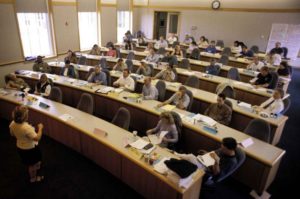 Educators should not be technocrats. “We have been educating ourselves for doing rather than for being (11, emphasis his). One cannot help but remember Neil Postman’s prescient concern that modern education is troubled with “marketable skills” over humanness (Technopoly, Knopf, 1992, 186). So chapter one is given to the foundational necessity of helping to develop wisdom within students. Chapter two is the baseline need to remember, that “grammatical” development is about remembering from whence one came. Chapter three commits to the “logical,” the desired process of learning how to think with the truth given. Persuasion is the “rhetorical,” committing the yearning of the heart to receiving truth, then giving it away to others. But liberal arts study is more than the process but a focus on the end, the ultimate desire to obtain wisdom, the focus of chapter five. Formative years, years spent with parents, is the heartbeat of chapter six, what Caldecott calls “education of the heart” (123).
Educators should not be technocrats. “We have been educating ourselves for doing rather than for being (11, emphasis his). One cannot help but remember Neil Postman’s prescient concern that modern education is troubled with “marketable skills” over humanness (Technopoly, Knopf, 1992, 186). So chapter one is given to the foundational necessity of helping to develop wisdom within students. Chapter two is the baseline need to remember, that “grammatical” development is about remembering from whence one came. Chapter three commits to the “logical,” the desired process of learning how to think with the truth given. Persuasion is the “rhetorical,” committing the yearning of the heart to receiving truth, then giving it away to others. But liberal arts study is more than the process but a focus on the end, the ultimate desire to obtain wisdom, the focus of chapter five. Formative years, years spent with parents, is the heartbeat of chapter six, what Caldecott calls “education of the heart” (123).
 No matter the Christian tradition, Lutheran, Baptist, Presbyterian, Anglican, Reformed, or Catholic can agree that the center of education is getting to the center of the learner in matters of the heart, the mission control of humanity. Famed educators are brought along the way to show patterns already sewn into educational fabric. Giussani (103), Guroian (121), Mason (125), Holt (128), and John Paul II (137) enlarge the reader’s vision and in so doing, enlarge the heart of education. No matter the theological persuasion in Christ’s body, the endnotes (139) give evidence of truth claims all can abide: the importance of conscience (141), being people of the Book (144), a commitment to coherence (145, 149), importance of “the whole person” (147), explanation of truth-goodness-beauty (154-56), all reflecting the glory of God (158).
No matter the Christian tradition, Lutheran, Baptist, Presbyterian, Anglican, Reformed, or Catholic can agree that the center of education is getting to the center of the learner in matters of the heart, the mission control of humanity. Famed educators are brought along the way to show patterns already sewn into educational fabric. Giussani (103), Guroian (121), Mason (125), Holt (128), and John Paul II (137) enlarge the reader’s vision and in so doing, enlarge the heart of education. No matter the theological persuasion in Christ’s body, the endnotes (139) give evidence of truth claims all can abide: the importance of conscience (141), being people of the Book (144), a commitment to coherence (145, 149), importance of “the whole person” (147), explanation of truth-goodness-beauty (154-56), all reflecting the glory of God (158).
 Pearls of God’s glory are strewn throughout the chapters. Expansive footnotes throughout the volume give voice to other Christian philosophers who wrote about teaching-learning imperatives: Sayers, Pieper, Weil, and Lewis, to name a few. “Learning how to name” (41, his emphasis) is considered the inception of education. Not only do humans identify but they interpret. Words do more than simply codify. Words give meaning. Words incarnationally connect us. Words are not simply to be known, rehearsed, used, or even loved; words remind us who and Whose we are.
Pearls of God’s glory are strewn throughout the chapters. Expansive footnotes throughout the volume give voice to other Christian philosophers who wrote about teaching-learning imperatives: Sayers, Pieper, Weil, and Lewis, to name a few. “Learning how to name” (41, his emphasis) is considered the inception of education. Not only do humans identify but they interpret. Words do more than simply codify. Words give meaning. Words incarnationally connect us. Words are not simply to be known, rehearsed, used, or even loved; words remind us who and Whose we are.
 Moreover, what is embedded in memory will impact how one lives The Story (50-51). The individual things must never be separated from transcendent universals (72). Caldecott’s belief in thankfulness as praising the highest truth (82) must be celebrated. Christ, not law, motivates Christian action (90). Worship is inseparable from all of life including education (96).
Moreover, what is embedded in memory will impact how one lives The Story (50-51). The individual things must never be separated from transcendent universals (72). Caldecott’s belief in thankfulness as praising the highest truth (82) must be celebrated. Christ, not law, motivates Christian action (90). Worship is inseparable from all of life including education (96).
 But it is the chapter on wisdom which expresses a seminal Christian view of curricula. There is no segregation between learning to be human and living as a human. One need not divide pupils into educational classes but seek to reach all with a focus toward Trinitarian grammar, logic, and rhetoric (107). The visual arts promote the necessity of imagination for learning (108). The common ground of synthesis unites concepts as well as educational constituencies (110-11). Central to Caldecott’s concerns are a focus on helping young people to see the beautiful through storytelling, music, exploration, drawing, dance, drama, and sport (114-16).
But it is the chapter on wisdom which expresses a seminal Christian view of curricula. There is no segregation between learning to be human and living as a human. One need not divide pupils into educational classes but seek to reach all with a focus toward Trinitarian grammar, logic, and rhetoric (107). The visual arts promote the necessity of imagination for learning (108). The common ground of synthesis unites concepts as well as educational constituencies (110-11). Central to Caldecott’s concerns are a focus on helping young people to see the beautiful through storytelling, music, exploration, drawing, dance, drama, and sport (114-16).
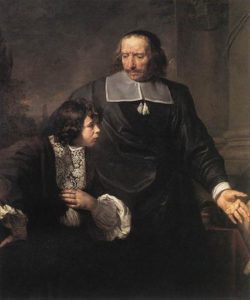 Certain insights could have benefited Caldecott’s imperatives. Emphasis on “naming” (40-41) should be situated immediately within Hebraic origins. The Creator who grants names and Whose creation gives names is derived from the practice of giving and receiving authority (Genesis 1-2). The question of authority is seriously problematic when Caldecott intones “It is not the Bible that is central, but the liturgy. The Bible is read through the lens of the liturgy” (102). A section on evolution (78-80) seems out of place, whether one commits to that form of earthly development or not; the pages seem inserted rather than forming a flow of argument. Unpacking decidedly Catholic terms will cause some skittishness until they are defined (110). Specific disagreements will be a distraction but will not overcome universal Christian truth throughout.
Certain insights could have benefited Caldecott’s imperatives. Emphasis on “naming” (40-41) should be situated immediately within Hebraic origins. The Creator who grants names and Whose creation gives names is derived from the practice of giving and receiving authority (Genesis 1-2). The question of authority is seriously problematic when Caldecott intones “It is not the Bible that is central, but the liturgy. The Bible is read through the lens of the liturgy” (102). A section on evolution (78-80) seems out of place, whether one commits to that form of earthly development or not; the pages seem inserted rather than forming a flow of argument. Unpacking decidedly Catholic terms will cause some skittishness until they are defined (110). Specific disagreements will be a distraction but will not overcome universal Christian truth throughout.
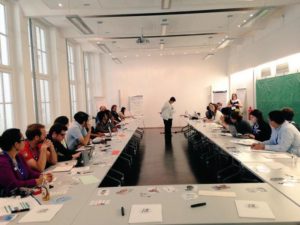 Education is never finished by humans in this life. Collective efforts to remember, think, and speak are ongoing efforts. So it is with great pleasure the reader learns that Caldecott’s venture is not simply a book but an “ongoing project” (2). The author’s efforts are not simply the completion of pages but the continuation of lives.
Education is never finished by humans in this life. Collective efforts to remember, think, and speak are ongoing efforts. So it is with great pleasure the reader learns that Caldecott’s venture is not simply a book but an “ongoing project” (2). The author’s efforts are not simply the completion of pages but the continuation of lives.
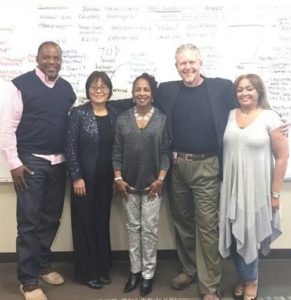 One must hear Esolen’s foreword, exposition of the problem educators’ face: the need for understanding begins not with how to teach but who is being taught. If one does not know the origin of humanity she will never teach the humanities. The conclusion is the introduction: the need for education is the need for the origin of knowledge. Knowing where humans come from and where they are going helps a teacher know what and how to teach now. To be a Christian educator takes into account the foundation of education which begins in the created order, changes one’s internal order, and helps students, then, to order their world.
One must hear Esolen’s foreword, exposition of the problem educators’ face: the need for understanding begins not with how to teach but who is being taught. If one does not know the origin of humanity she will never teach the humanities. The conclusion is the introduction: the need for education is the need for the origin of knowledge. Knowing where humans come from and where they are going helps a teacher know what and how to teach now. To be a Christian educator takes into account the foundation of education which begins in the created order, changes one’s internal order, and helps students, then, to order their world.
 Mark’s review Beauty in the Word: Rethinking the Foundations of Education will be published in the spring 2018 edition of Christian Education Journal. Dr. Mark Eckel is President of The Comenius Institute (website), spends time with Christian young people in public university (1 minute video), hosts a weekly radio program with diverse groups of guests (1 minute video), interprets culture from a Christian vantage point (1 minute video), and teaches weekly at his church (video). Comenius is one of over 30 Christian study centers around the U.S., a part of the Consortium of Christian Study Centers (website).
Mark’s review Beauty in the Word: Rethinking the Foundations of Education will be published in the spring 2018 edition of Christian Education Journal. Dr. Mark Eckel is President of The Comenius Institute (website), spends time with Christian young people in public university (1 minute video), hosts a weekly radio program with diverse groups of guests (1 minute video), interprets culture from a Christian vantage point (1 minute video), and teaches weekly at his church (video). Comenius is one of over 30 Christian study centers around the U.S., a part of the Consortium of Christian Study Centers (website).
Picture credits: https://snappygoat.com/ and https://www.amazon.com/Beauty-Word-Rethinking-Foundations-Education/dp/1621380041/

